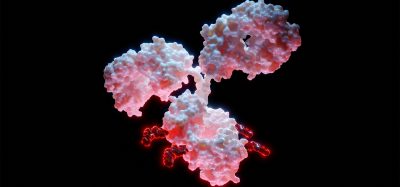New SMART tool maps RNA modifications to tackle cancer and infections
Posted: 11 September 2025 | Drug Target Review | No comments yet
Researchers have developed the first high-throughput tool to rapidly profile RNA modifications – a breakthrough that could lead to more precise treatments for cancer and antibiotic-resistant infections.


Researchers at the Antimicrobial Resistance (AMR) group of the Singapore-MIT Alliance for Research and Technology (SMART) have developed a platform that can scan thousands of biological samples to detect transfer ribonucleic acid (tRNA) modifications – small chemical changes that help cells respond to diseases such as cancer and antibiotic-resistant infections.
The research was published in Nucleic Acids Research.
Addressing limits in RNA modification profiling
The epitranscriptome – encompassing more than 170 chemical modifications of RNA – regulates normal cell growth and stress responses but is often disrupted in cancer or exploited by pathogens. Current methods to study these modifications are slow and rely on hazardous chemicals.
To overcome these limitations, the SMART team created an automated tool for rapid profiling of tRNA modifications. This allows researchers to map regulatory networks, discover new enzymes and link molecular changes to disease – which could lead to improved treatments and diagnostics in the future.
Unlocking the complexity of RNA modifications
The study shows how the tool discovered previously unknown RNA-modifying enzymes and mapped complex gene networks.
Using robotic liquid handlers, the team analysed tRNA from over 5,700 genetically modified strains of Pseudomonas aeruginosa – bacteria responsible for infections like pneumonia and sepsis. More than 200,000 data points revealed new enzymes and networks, including the enzyme MiaB, which was found to respond to iron, sulfur and low oxygen conditions.
Unlike traditional approaches that use toxic solvents, SMART’s system automates sample preparation and analysis – cutting costs while increasing safety.
A faster way to study RNA
“This pioneering tool marks a transformative advance in decoding the complex language of RNA modifications that regulate cellular responses. Leveraging AMR’s expertise in mass spectrometry and RNA epitranscriptomics, our research uncovers new methods to detect complex gene networks critical for understanding and treating cancer as well as antibiotic-resistant infections. By enabling rapid, large-scale analysis, the tool accelerates both fundamental scientific discovery and the development of targeted diagnostics and therapies that will address urgent global health challenges,” said Professor Peter Dedon, Co-lead PI at SMART AMR and professor of biological engineering at MIT.
Applications in research and healthcare
The platform has wide applications across research, biotech and healthcare –from studying gene regulation and RNA biology to drug discovery and biomarker screening.
This is the first tool that can rapidly and quantitatively profile RNA modifications across thousands of samples
“This is the first tool that can rapidly and quantitatively profile RNA modifications across thousands of samples,” said Dr Jingjing Sun, Research Scientist at SMART AMR. “It has not only allowed us to discover new RNA-modifying enzymes and gene networks but also opens the door to identifying biomarkers and therapeutic targets for diseases such as cancer and antibiotic-resistant infections. For the first time, large-scale epitranscriptomic analysis is practical and accessible.”
Looking ahead
SMART AMR now aims to extend the tool to study RNA modifications in human cells and tissues, with the aim of integrating it into clinical research and pharmaceutical applications. By making large-scale epitranscriptomic analysis practical, the technology could accelerate the development of personalised medicine and more effective treatments.
Related topics
Analysis, Analytical Techniques, Antibiotics, Assays, Cancer research, Drug Discovery, Drug Targets, Enzymes, RNAs
Related conditions
Cancer, Infections
Related organisations
Singapore-MIT Alliance for Research and Technology (SMART)








